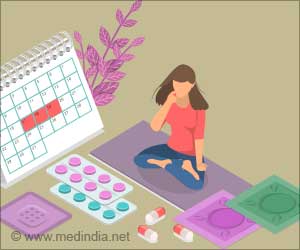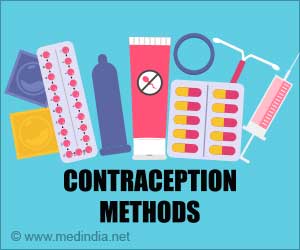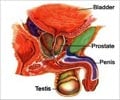Medindia adheres to strict ethical publishing standards in publishing to deliver content that is accurate, relevant, and current. We ensure the integrity of our materials by sourcing from authoritative sources including peer-reviewed journals, academic institutions, research organizations, medical associations and, in some cases, non-profit organizations. We welcome and value audience feedback as a part of our commitment to health literacy and informed decision-making.
- 1. Family planning/contraception methods
- (https://www.who.int/news-room/fact-sheets/detail/family-planning-contraception)
- 2. Contraception - choices - (https://www.betterhealth.vic.gov.au/health/healthyliving/contraception-choices)
- 3. Modern Family Planning Utilization and Its Associated Factors among Currently Married Women in Rural Eastern Ethiopia: A Community-Based Study
- (https://www.ncbi.nlm.nih.gov/pmc/articles/PMC7785364/)
- 4. Contraception - Types, Benefits, and Side-effects
- (https://patient.info/doctor/contraception-general-overview)
- 5. Women's Sexual and Reproductive Health Services: Key Findings from the 2020 KFF Women's Health Survey
- (https://www.kff.org/womens-health-policy/issue-brief/womens-sexual-and-reproductive-health-services-key-findings-from-the-2020-kff-womens-health-survey/)
- 6. Strategies to improve adherence and continuation of shorter-term hormonal methods of contraception
- (https://www.ncbi.nlm.nih.gov/pmc/articles/PMC6478403/)
- 7. New Study Finds Women's Health Providers Use IUDs More Than Any Other Method of Birth Control
- (https://www.plannedparenthood.org/about-us/newsroom/press-releases/new-study-finds-womens-health-providers-use-iuds-more-than-any-other-method-of-birth-control)
- 8. Contraceptive Methods Women Have Ever Used: United States, 1982-2010 - (https://www.cdc.gov/nchs/data/nhsr/nhsr062.pdf)
- 9. Coitus Interruptus (Withdrawal)
- (https://www.cdc.gov/reproductivehealth/contraception/mmwr/mec/appendixh.html)
- 10. Racial differences in vasectomy utilization in the United States: Data from the National Survey of Family Growth
- (https://www.ncbi.nlm.nih.gov/pmc/articles/PMC2784091/)
- 11. Contraceptive method use, discontinuation and failure rates among women aged 15-49 years: evidence from selected low income settings in Kumasi, Ghana
- (https://www.ncbi.nlm.nih.gov/pmc/articles/PMC7908716/)
- 12. Family Planning
- (https://main.mohfw.gov.in/sites/default/files/56324455632156323214.pdf)
- 13. The Pill, Sterilization, and Condoms Top List of U.S. Birth Control Choices - (https://www.prb.org/resources/us-contraceptives-pill-sterilization-condoms-top-list-of-u-s-birth-control-choices/)
- 14. The Power of the Pill for the Next Generation: Oral Contraception's Effects on Fertility, Abortion, and Maternal & Child Characteristics
- (https://www.ncbi.nlm.nih.gov/pmc/articles/PMC3289404/)
































